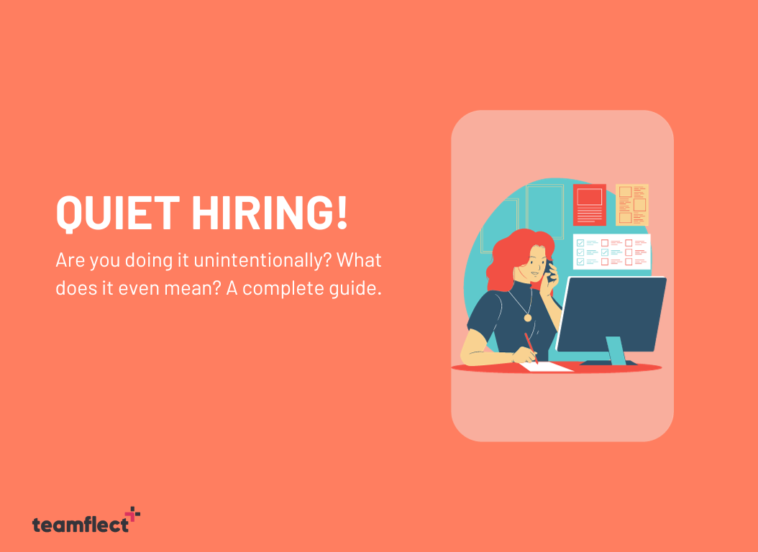Quiet hiring… Doesn’t it feel like we are inventing new HR buzzwords once every two weeks now? Who on earth is coming up with all this stuff, right? Well… Let us clear the air. While there are plenty of terminology in the world of performance management that can quite easily labeled redundant, quiet hiring isn’t one of them.
The whole discussion surrounding quiet hiring isn’t just a case of someone coming up with a term to piss all those quiet quitting millennials and entitled Gen-z brats off. It is simply another case of a long-running practice that has finally received a name.
While we here at the Teamflect blog were wholeheartedly on the side of quiet quitting on a previous entry, this is an even more nuanced issue, and deciding whether quiet hiring is a positive or a negative thing is just an incredibly tricky and difficult process.
So… Let’s do just that! In this post, we will be answering the following questions:
- What is quiet hiring?
- Why is quiet hiring trending?
- Are there any benefits to quiet hiring?
- How to identify if you are unintentionally quiet hiring.
- How to avoid quiet hiring.
Table of Contents
Make The Most Of Your Existing Staff!
Here is a little trick. If you provide your existing staff with the right platform and conditions for productivity, you might find that you don’t really need to quietly hire someone after all! For those organizations using Microsoft Teams on a daily basis, that platform is Teamflect, the best all-in-one performance management software that is designed for Microsoft Teams!
You can try Teamflect for absolutely free! No signing-up necessary! It is completely free for up to 10 users with full functionality!



